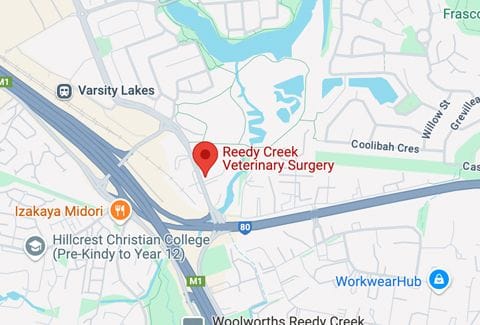7 Common Foods to Hide Dog Medication In & What Not to Do
)
There is no one-size-fits-all when it comes to medicating our pets. And that includes encouraging them to take their pills or tablets too.
Some pets enjoy the flavours that pet medications have, and others can smell the packet open and begin evasive maneuvers long before you realise.
How to hide pet medications in food
Read the label
Every medication is made of different ingredients. And they’re built to release in different ways too. Some medications can have their effects reduced or even stopped completely when mixed with the wrong foods.
For example, calcium-rich foods shouldn’t be mixed with certain pet antibiotics.
Make sure the foods are safe for your pet
If you’re unsure about giving your pet any foods they don’t usually eat, contact your vet. Every pet has individual dietary needs depending on its age, breed, and medical conditions.
For example, a pet could be lactose intolerant and shouldn’t be given cheese as encouragement.
Don’t break medications into smaller pieces or crush it
While making tablets into more manageable sizes may seem like a good idea, it often isn’t. Some drugs are designed to release at different times during the digestive process, and their structure helps them do that.
By crushing or grinding pet medication, you could be lessening the effects or even eliminating its effectiveness completely, so check with your vet first whether breaking or crushing your pet’s medication is appropriate.
Don’t overdo it
Human foods aren’t made to be friendly to a canine digestive system. If your pet is particularly talented at dodging its hidden medication, don’t keep trying to hide it in human food by giving them more. Instead, talk to your vet about alternative methods to medicate your pet or further advice.
Which foods are safe to hide pet medication in?
One of the most common ways pet owners encourage their pets to swallow a tablet is to hide it in a treat or an exciting food.
Many human foods can be toxic to pets, so make sure to check with your vet before giving them any foods they don’t usually eat. If your pet needs to take a tablet daily, it’s usually best to avoid mixing it with human foods and treats.
And, if you feel unsure, it’s usually best to avoid giving your pet human foods entirely.
Always check with your vet before mixing medications with foods.
Commonly used foods to hide dog medication include
Lightly cooked or boiled meats, like chicken (low oils, fats, seasonings and uncured)
Greek yogurt (free of artificial flavourings and fruits)
Honey
Bananas
Some soft cheeses
Peanut butter (low in oil and free of toxic sugar substitutes like xylitol)
Canned tuna (in water (not oil) and free of flavourings)
Hiding pills or tablets in pet foods
It’s always safer to give your furry friends foods that are specifically designed for them. Wet foods and pet treats are safer and should be more than exciting enough to encourage your pet to take its tablet.
Make an appointment with your vet for a consultation on your pet’s age, breed, and medical condition for advice on its diet.
The safest way to give your dog its medication
Your dog is unique, and so are their dietary requirements. Some foods listed above won’t suit your dog and could cause further problems. Some medications are even designed to be given specifically on an empty stomach.
Talk to your vet for help treating your pet and advice for encouraging your dog to take their tablets.
Reedy Creek Vet is open Monday to Friday, 8 am to 5:30 pm, and 8 am to 12 pm on Saturday.
Book an appointment online for a consultation, or call us at (07) 5593 8395.
| Tags:DogClient InformationHealth Advice |
&geometry(140x140))

